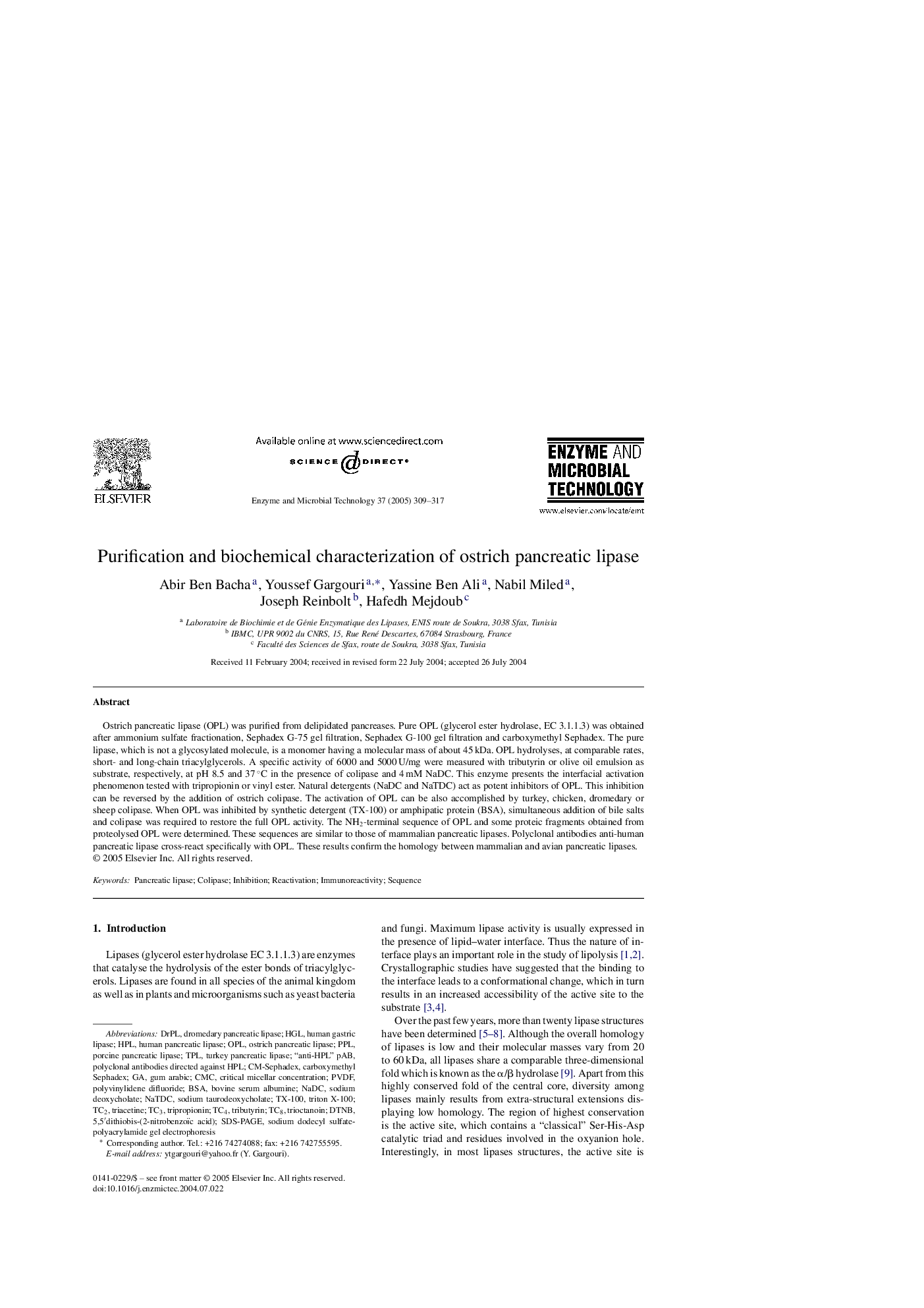| Article ID | Journal | Published Year | Pages | File Type |
|---|---|---|---|---|
| 10233177 | Enzyme and Microbial Technology | 2005 | 9 Pages |
Abstract
Ostrich pancreatic lipase (OPL) was purified from delipidated pancreases. Pure OPL (glycerol ester hydrolase, EC 3.1.1.3) was obtained after ammonium sulfate fractionation, Sephadex G-75 gel filtration, Sephadex G-100 gel filtration and carboxymethyl Sephadex. The pure lipase, which is not a glycosylated molecule, is a monomer having a molecular mass of about 45 kDa. OPL hydrolyses, at comparable rates, short- and long-chain triacylglycerols. A specific activity of 6000 and 5000 U/mg were measured with tributyrin or olive oil emulsion as substrate, respectively, at pH 8.5 and 37 °C in the presence of colipase and 4 mM NaDC. This enzyme presents the interfacial activation phenomenon tested with tripropionin or vinyl ester. Natural detergents (NaDC and NaTDC) act as potent inhibitors of OPL. This inhibition can be reversed by the addition of ostrich colipase. The activation of OPL can be also accomplished by turkey, chicken, dromedary or sheep colipase. When OPL was inhibited by synthetic detergent (TX-100) or amphipatic protein (BSA), simultaneous addition of bile salts and colipase was required to restore the full OPL activity. The NH2-terminal sequence of OPL and some proteic fragments obtained from proteolysed OPL were determined. These sequences are similar to those of mammalian pancreatic lipases. Polyclonal antibodies anti-human pancreatic lipase cross-react specifically with OPL. These results confirm the homology between mammalian and avian pancreatic lipases.
Keywords
DTNBNaTDCTC8TC4PPLCM-sephadexOPLTX-100TPLTc2NaDCHGLTributyrinTC3HPLPVDFCMCBSAbovine serum albuminesodium dodecyl sulfate-polyacrylamide gel electrophoresisSDS-PAGEImmunoreactivityInhibitiontripropioninTriton X-100Sequencepolyvinylidene difluoridesodium taurodeoxycholateSodium deoxycholateTrioctanoinGum arabicCritical micellar concentrationhuman gastric lipasePancreatic lipasehuman pancreatic lipasePorcine pancreatic lipaseReactivationcarboxymethyl sephadexColipase
Related Topics
Physical Sciences and Engineering
Chemical Engineering
Bioengineering
Authors
Abir Ben Bacha, Youssef Gargouri, Yassine Ben Ali, Nabil Miled, Joseph Reinbolt, Hafedh Mejdoub,
